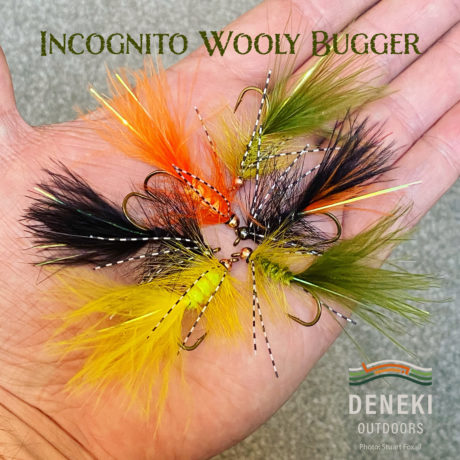
With Halloween just coming up this week, we thought we’d tie a golden oldie fly pattern and dress it up. From our friend Stuart Foxall, comes a variant of the Wooly Bugger. Combining a classic fly pattern with modern materials makes for a quick, colorful, and most importantly, effective fly. Cheers!
It’s funny how patterns fall out of favour slightly. With more attractive and more imitative sculpin patterns, the ‘Wooly Bugger’ isn’t quite as popular as it once was, although it has worked amazingly well for generations of anglers.
Here’s a quick tie variant that works exceptionally well and uses a few modern materials to bring it a little more up to date.
Tie, instruction & Photos by Stuart Foxall.
Step 1: Tie on some marabou fibres for a tail… I’ve used olive. I like to put a couple of wraps of thread under the tail which helps prevent the marabou from wrapping around the hook.

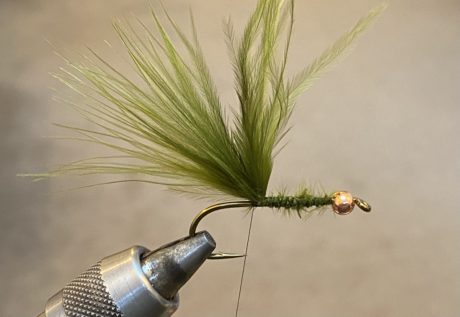
Step 2: Tie in a couple of strands of mirage flashabou on either side of the tail.

Step 3: Tie in a strand of oval tinsel…I’ve used gold.
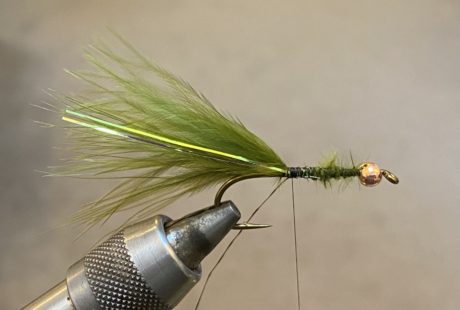
Step 4: Tie in a cock hackle by the tip as a Palmér hackle. I’ve used a golden olive colour but grizzle barred hackles are very good also.
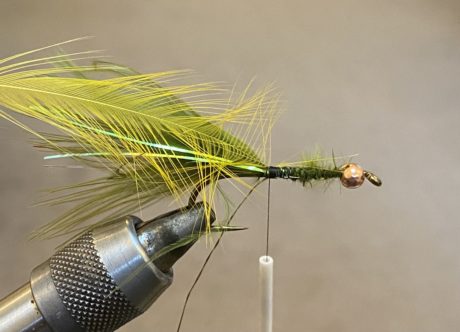
Step 5: Strip the flue off some chenille to expose the core and tie it onto the hook shank. Ive used olive.
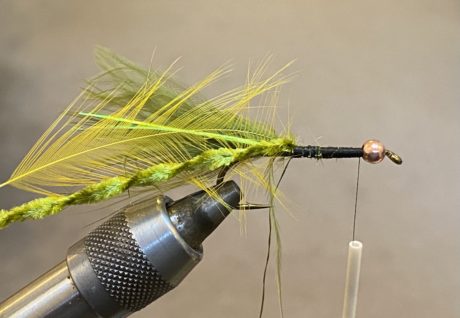
Step 6: Wrap the chenille down the hook shank to create the body and tie it off.
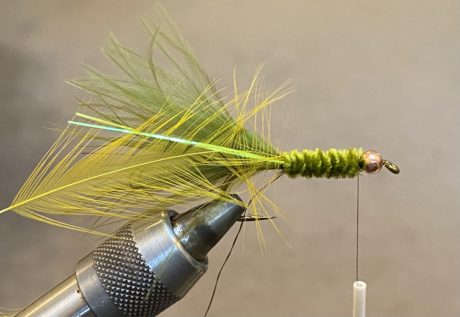
Step 7: Wrap the Palmer hackle down to the head and tie it off.
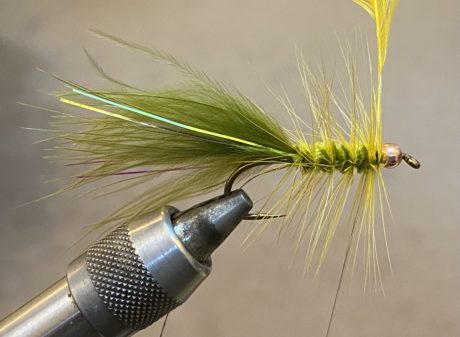
Step 8: Counter wrap the rib neatly down the hook shank to protect the clock hackle from fish teeth.
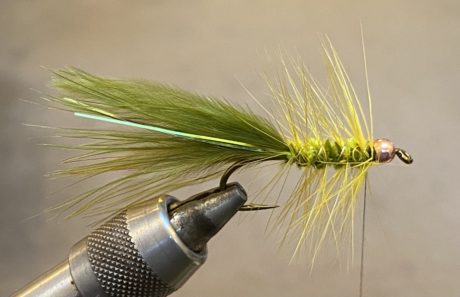
Step 9: Tie in a pair of grizzle micro rubber legs on each side of the fly.
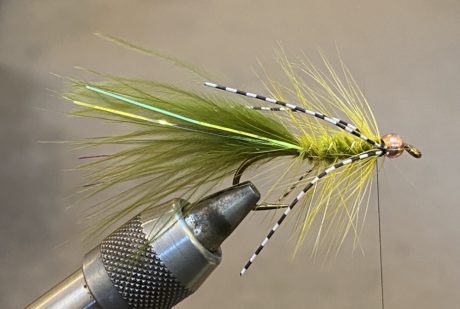
Step 10: Tie in another cock hackle by the tip for the head hackle. This will give us a sculpin profile in the water, give us more movement, and cover the tie-off points at the head.
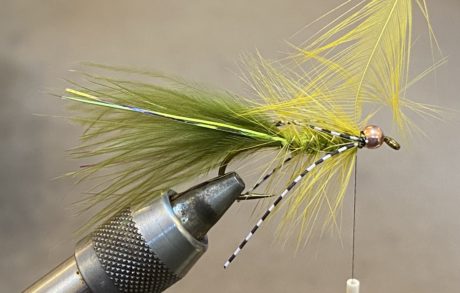
Step 11: Give a couple of wraps of hackle at the head and tie off. I dab my thread with a bit of super glue to finish off more securely.
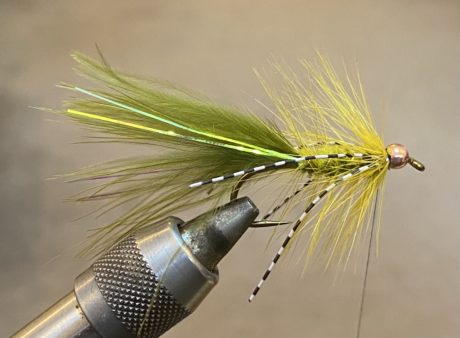
Finished Fly:
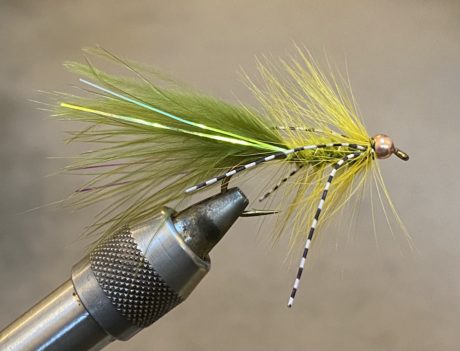
Part of the genius behind a lot of long-standing patterns is their flexibility. Not only has this pattern caught a lot of species, but it can be used with a variety of different lines and techniques of fly fishing to cover all weather and water conditions.
We use an olive combination of colours for the fly in this particular tie, but look at all of the options of colour we have available to us and they will all work in certain situations.
Other Flys to from Stuart Foxall:
Nice piece of work.
I really like tieing my fies to fish with. Have a few different types. My father got me into sitting in front of my vice years ago. Appreciate you for giving me more ideas.